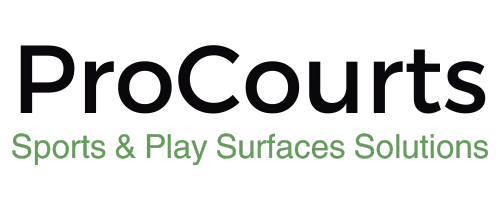
10 Best Practices for Repairing & Resurfacing Basketball Courts | ProCourts
A well-maintained basketball court ensures safe play, enhances performance, and extends the lifespan of the surface. Regular wear and tear from games, weather conditions, and environmental factors can cause cracks, fading, and surface deterioration. In Kansas City, the extreme climate—including hot summers, freezing winters, and seasonal rain—can accelerate damage, making timely repairs and resurfacing essential.
Table of Contents
How Weather and Usage Impact Court Surfaces
Heat and Sun Exposure: UV rays can break down court coatings, causing fading and surface weakening.
Freeze-Thaw Cycles: Water seeps into cracks, freezes, and expands, making cracks worse over time.
Heavy Use: Frequent play increases surface wear, especially on high-traffic areas like free-throw and three-point lines.
Rain and Moisture: Poor drainage can lead to standing water, promoting mold and surface deterioration.
10 Best Practices for Repairing and Resurfacing Basketball Courts

1. Assessing Surface Damage Before Repairs
Before starting any resurfacing work, thoroughly inspect the court for cracks, low spots, and fading. Identifying issues early prevents costly repairs down the line.
2. Filling Cracks and Potholes Properly
Use high-quality crack fillers designed for asphalt or concrete courts. Deep cracks should be filled with flexible, weather-resistant materials to prevent future expansion.
3. Choosing the Right Resurfacing Materials
The choice of resurfacing materials depends on the court type:
Asphalt Courts: Acrylic resurfacing coatings offer durability and UV resistance.
Concrete Courts: Polyurethane coatings improve traction and longevity.
Modular Tile Courts: Interlocking tiles provide cushioning and easy replacement.
4. Ensuring Proper Drainage to Prevent Future Damage
Standing water leads to surface degradation. Proper slope and drainage channels help prevent water accumulation.
5. Applying a Durable Acrylic or Polyurethane Coating
Acrylic and polyurethane coatings protect against UV rays and moisture while enhancing court aesthetics. These coatings also provide non-slip textures for player safety.
6. Repainting Court Lines with High-Quality Paint
Faded court lines affect gameplay. Use weather-resistant, high-visibility paint to ensure accuracy and longevity.
Learn more about What Is the Best Paint to Use for an Outdoor Basketball Court?
7. Adding Non-Slip Finishes for Player Safety
Applying a non-slip texture to the court surface reduces the risk of slips and injuries, especially in wet conditions.
8. Scheduling Routine Maintenance for Long-Term Performance
Regular cleaning, crack sealing, and minor touch-ups help maintain the court’s integrity. A professional inspection every 2-3 years is recommended.
9. Understanding Local Climate Considerations in Kansas City
Due to Kansas City’s temperature extremes, resurfacing should be done in late spring or early fall when conditions are optimal for curing and setting.
10. Hiring a Professional Basketball Court Contractor
Expert court resurfacing ensures durability and quality. ProCourts specializes in basketball court repairs and resurfacing, delivering long-lasting solutions for schools, community centers, and homeowners.
How Much Does It Cost to Resurface a Basketball Court in Kansas City?

Factors That Affect Pricing
Court Size: Larger courts require more materials and labor.
Extent of Damage: Courts with severe cracks and fading need extensive repairs.
Choice of Coating: Premium coatings increase costs but offer better longevity.
Expected Timeframe for Resurfacing a Court
Most basketball court resurfacing projects take 2-5 days, depending on weather conditions and the complexity of repairs.
Why Choose ProCourts for Your Basketball Court Resurfacing?

Professional Repair Services in Kansas City
ProCourts offers expert basketball court resurfacing tailored to Kansas City’s climate and facility needs.
High-Quality Materials for Long-Lasting Results
We use premium coatings and repair materials to ensure durability and safety.
Competitive Pricing and Free Estimates
Get a free consultation and quote to assess your basketball court’s repair and resurfacing needs.
Learn more about Procourtskc court repair and resurfacing services
Frequently Asked Questions About Court Repair & Resurfacing

How often should a basketball court be resurfaced?
Outdoor basketball courts should be resurfaced every 3-5 years, depending on usage and weather exposure.
What is the best material for an outdoor basketball court?
Acrylic coatings are ideal for asphalt courts, while polyurethane coatings work best for concrete surfaces.
Can I DIY a basketball court repair, or should I hire a professional?
While minor repairs can be done independently, professional resurfacing ensures quality, durability, and player safety.
Conclusion
Maintaining a basketball court enhances player experience, safety, and longevity. By following these best practices, facility managers, schools, and homeowners can keep their courts in top shape.
Need professional resurfacing? Contact ProCourts today for a free consultation and expert basketball court repair services in Kansas City!


